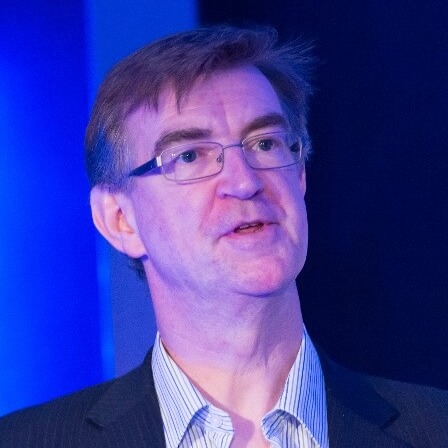Will Programmatic Ad Planning Finally Become More Art Than Science?
Advertising is as much an art as a science, but how can your business find the right balance?

I have never bought the notion of a division between the programmatic practices we are marvelling at today and the supposed golden age of creative advertising, typified by the 1950s or 80s.
At the recent Guardian Changing Media Summit, BBH founder Sir John Hegarty described both Michelangelo’s Sistine chapel and the process of salesmanship, equally, as “art”. He’s right - sometimes ad planning is about looking for an oddity in media data that opens the window to a better buy.
That is why I am concerned that we may, indeed, be letting the programmatic process override the purpose.
Almost like Franz Kafka’s “The Metamorphosis”, the nature of programmatic is changing rapidly.
These days it feels rather like the numbers do the talking. Data- and software-driven ad planning, targeting and buying are revolutionising the industry. So it’s no surprise that technology and science are winning the war for column inches.
However, I have recently noticed a quaint attempt at a correction. The programmatic ad-tech vendors, the agency data executives and the brand scientists are starting to looking at the “creative” part of programmatic. It seems to me the ad-tech sector is coalescing around a new challenge: now that we have the media in place, it’s time to focus on the message.
With new programmatic technology now available, advertisers are doing a great job at delivering to the right person at the right time. As an industry, however, we are less good at delivering the right message.
When VPs, data scientists or Chief Science Officers wade into “creativity” waters, it can seem to make for an awkward, embarrassing moment - speaking beyond their brief. But the truth is, there is a new trend emerging here.
Let’s take an example. If you are a online retailer these days, then data sets, propensity-to-buy ratings and targeting superpowers can help take your creative ad to a prospective customer, whether they are browsing The Daily Mail or wsj.com. The trouble is, those readers are likely to be very different.
This should make a world of difference to the kinds of triggers you present to them, the buttons you push. Nevertheless, limitations in automated buying technology mean we are often left looking for ways to create tailor made, personalised messages.
It is now clear that marketers need to come up with real-time, individual-by-individual media planning that prizes the richness and uniqueness of a message, not just how efficiently it reaches its audience.
Dynamic creative optimisation technology is emerging that promises to support more creative messaging, whilst programmatic sequencing raises the possibility of delivering personalised narrative campaigns, beyond the life of a single piece of inventory.
In response, creative agencies protest that producing multiple messages increases cost and complexity. Fifty-eight percent of marketers report having insufficient operational resources to execute dynamically optimised campaigns, according to a Digiday survey. Two thirds say a lack of creative resources is preventing them reaching true scale.
But I don’t think it is beyond the wit of our industry to produce creatives that more appropriately match the media which carry them. In analogue, we have already done it for years - an ad for a credit card looks very different in a holiday magazine to its manifestation in a business weekly.
Whilst our business, holistically, is both technological and creative, we’re still painfully trying to make technologists talk to the creatives and vice-versa. To take full advantage of the programmatic power we need to rethink the way we conceive messages and the way our new audiences digest them.
Tom Bowman is CEO of Intelligent Optimisations
Thanks for signing up to Minutehack alerts.
Brilliant editorials heading your way soon.
Okay, Thanks!




